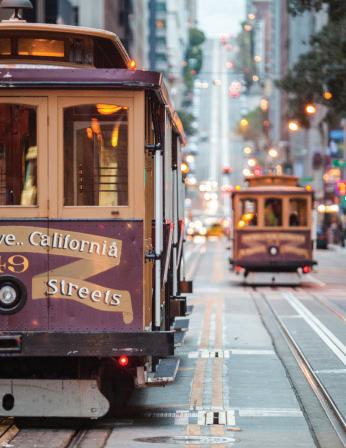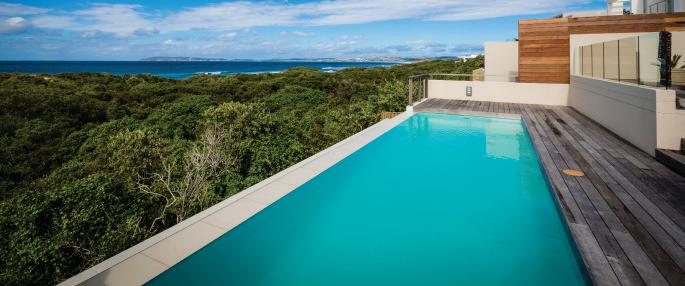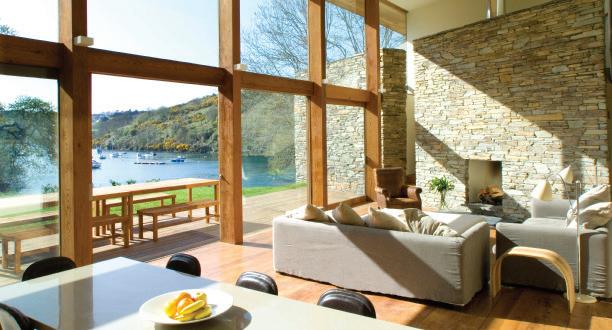
5 minute read
WELCOME MESSAGE
In the US, statistics show that the luxury home prices for single family homes rose on average 8% last year and are expected to continue at this record-breaking rate for the early part of 2021. In Canada, expectations are for the luxury market to rise as much as 8% in 2021 too.
Accordingly to Coldwell Banker’s President and Chief Executive Officer, M. Ryan Gorman, the statistics uncovered in their recent report “point to a promising luxury home market with a strong starting position as we move further into this year.” He also states that, “there were many bright spots around the country and the world, as people adjusted their notions of home and sought fully amenitized retreats where they could live, work, and eventually entertain in place.”
In this report, they identified four markets that stood out amount the top performers in the US, specifically based on comparing high sales ratio percentages. Their choice of parameter to measure performance was guided by the escalating number of luxury property sales and the importance of understanding this impact on the level of inventory available. Increased sales does not always mean that inventory levels drop, especially in the luxury market when properties typically take longer to sell, but in 2020 the swing was dramatic with many markets becoming seller-controlled for the first time in many years.
Northern California’s East Bay region topped the charts as people relocated in large numbers out of San Francisco in search of less dense living. Colorado Springs, already identified in 2019 as a “market to watch,” also saw substantial increase in demand as Denver’s ever-increasing prices and adaptation to working from home allowed for purchasing homes outside the metropolitan area.
Low interest rates gave DC and Arlington-area millennials the unexpected opportunity to trade their condos and move into townhomes in Fairfax County in Virginia, also driven by the ability to work from home. Whereas in King County, WA, the demand for single-family homes soared when the ever-increasing number of employees working for Apple and Amazon in Seattle realized they too could move further afield and leverage these companies’ “long term work from home” guarantee.
Much has been stated in the real estate news about the relocation of homeowners out of the major metropolises, and Coldwell Banker Global Luxury’s report seeks to clarify each of the top seven markets in the US and five in Canada, to understand the true impact of the pandemic.
What may be surprising to many is that overall, the impact was not as dramatic as the initial reports in April, May, and June portrayed. Downtown and high-density areas did see their affluent depart for second homes or purchase homes in exurbia areas, but interestingly the percentage that sold their home was not as great as expected. Many kept their city home and merely swapped the location of their first home – at least until the pandemic is over.
Several key trends did appear for those that sold, insomuch as the affluent upsized to larger apartments, with more square footage, private elevators, outdoor patios, and the ability to upgrade air filtration, while others chose to move into townhomes and/or slightly further away into the suburbs to purchase a single-family home.
According to Wealth-X in their recent report, Residential Real Estate 2021: Leading Markets for the Wealthy, New York still remains the global preeminent city of the wealthy, with Los Angeles ranking second, followed by London, Hong Kong, and Paris.
A recent new study, published by nonpartisan California Policy Lab, does show that San Francisco was impacted greatly with a staggering 649% jump in relocations. However, they quickly qualified that these relocators didn’t go very far, moving within the 11-county Bay Area, with over 80% remaining in California. As for the wealthy and the rumors of their departure from California, statistics show no indication of mass relocation. Joel Goodrich of Coldwell Banker Realty in San Francisco qualified that in his experience, the exodus outside of the Bay Area has mainly been to Napa, Sacramento, and Lake Tahoe.
In Los Angeles, Jade Mills of Coldwell Banker Realty in Beverly Hills, shared that her clients were staying local although upsizing into larger properties and moving to areas such as Malibu, Manhattan Beach, and up into Beverly Hills rather than staying in the more densely populated areas of LA. Interestingly, her clientele has changed from 50% international to more than 80% being US buyers in the US$20 million range.
Miami, another of the US’s wealthiest cities, has seen an upsurge in their numbers – again driven by US buyers rather than their typical international purchaser. Jill Eber of Coldwell Banker Realty in Miami shared, “single-family homes exploded initially, and condos took off once important amenities like pools were reopened and people became more comfortable with accessibility in the new normal.”

The metropolitan cities of Canada saw similar trends with abrupt halts to their real estate markets in March, April and May, after which their luxury markets have seen significant increases in demand and pricing as well as falling inventory levels.
Downtown cores in Toronto and Vancouver did see their condo market take longer to recover, but larger properties throughout the metropolitan city areas and in more suburban areas saw unprecedented demand.
Ottawa saw its luxury market’s median price point increase 25.53% for single-family homes and 4.71% for luxury condos, as Raymond Chin of Coldwell Banker First Ottawa Realty explained “homes a short drive outside the city became more popular with homeowners who may not be required to go back to work every day in the city.”
Similar trends are being reported in Europe, Asia, and Central and South America, with high-networth buyers not only investing in popular vacation destinations, but choosing to make these residences their primary homes, for the foreseeable future.
Equally, many of these buyers are tending to hold on to their urban residences, using them as second homes or pieds-à-terre, enjoying the opportunity to work from home in their new primary home locations.
There are increasing reports of large compound style residences as well as crumbling chateaus, castles, and large private estates being repurposed to suit the affluent’s new requirements. Vacation locations from the Caribbean islands to ski resorts have seen robust price increases with some destination locales reporting homes being bought sight unseen.
For homeowners looking to sell or buy their luxury home in today’s market, we recommend working with a luxury real estate professional who can provide you with critical knowledge about your local market, maintain a high level of security and safety during the process, and who knows how to leverage technology and strategies to provide maximum exposure and assistance.

– 13-MONTH MARKET TRENDS –
FOR THE LUXURY NORTH AMERICAN MARKET
Single-Family Homes Attached Homes Single-Family List Price Attached List Price
All data is based off median values. Median prices represent properties priced above respective city benchmark prices.
DAYS ON MARKET
PRICE PER SQUARE FOOT
SALES PRICE VS. LIST PRICE



